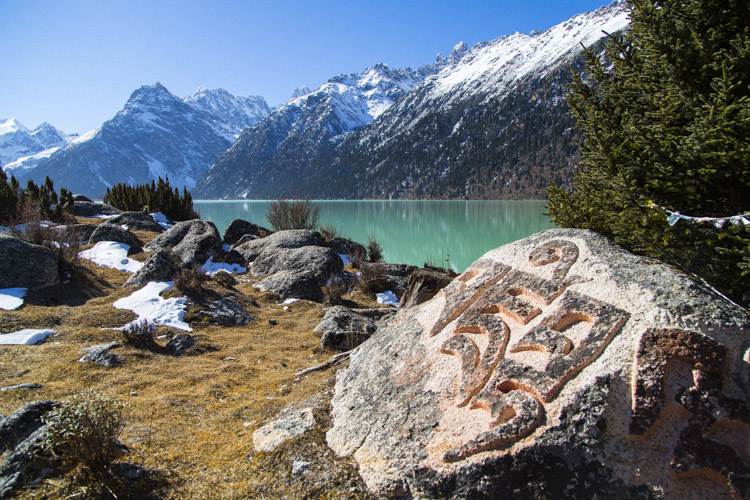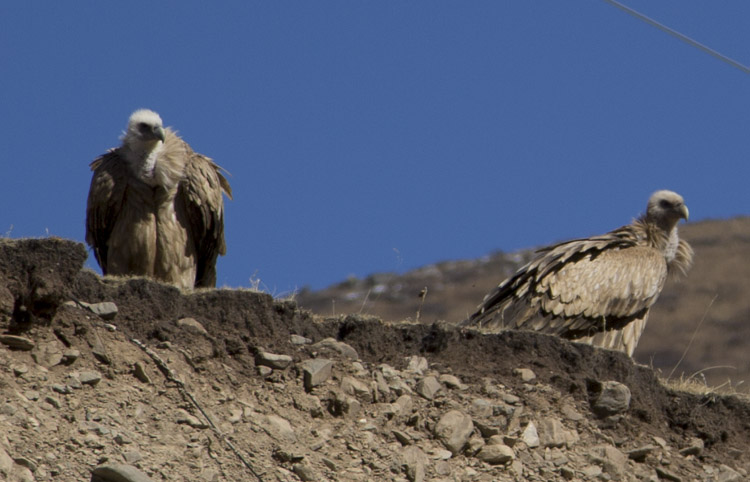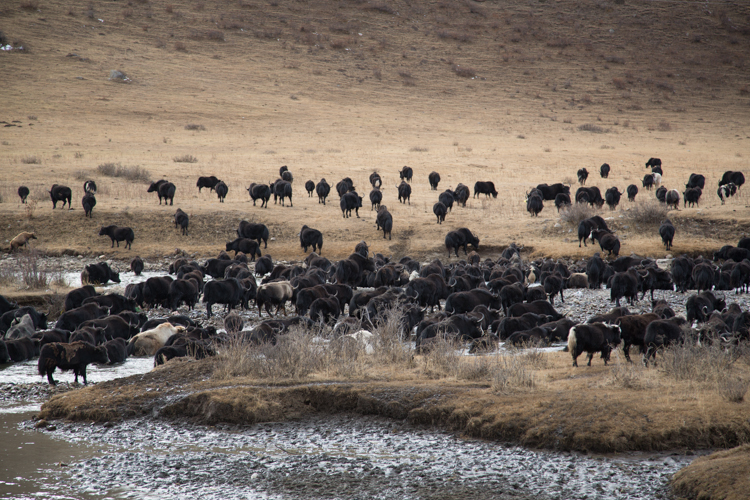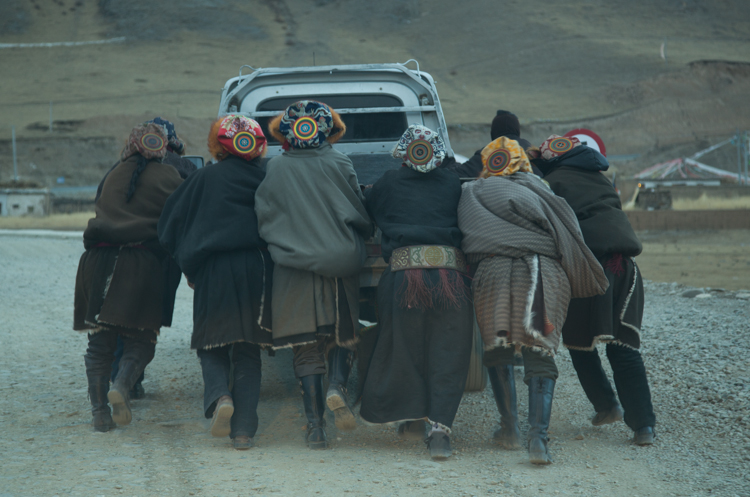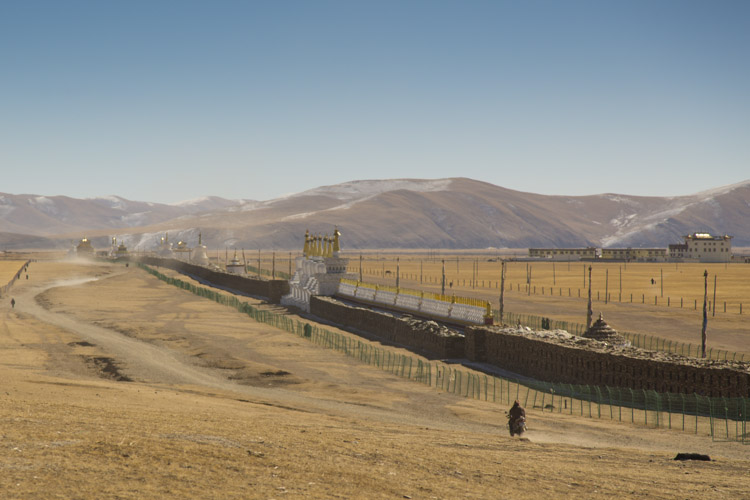This time four years ago, we were exploring a remote and ruggedly beautiful part of China’s Sichuan Province. Joanna James remembers an epic day on the road…
The ramshackle town of Manigango sits astride a fork in the road to Tibet. Take the right-hand fork and a dirt road will lead you into Sichuan’s extreme northwest, the birthplace of Tibetan legends and the burial place of heroes, home of yak-riding nomads and cities built of prayer stones. Eventually, you come to Shiqu, the last town in Sichuan.
In November 2013, when our little convoy reached the afore-mentioned fork in the road, Shiqu and the surrounding region were a mystery to me. Three days’ drive from the provincial capital, Chengdu, and a full day’s drive from the nearest airport, Shiqu is not an easy place to get to.
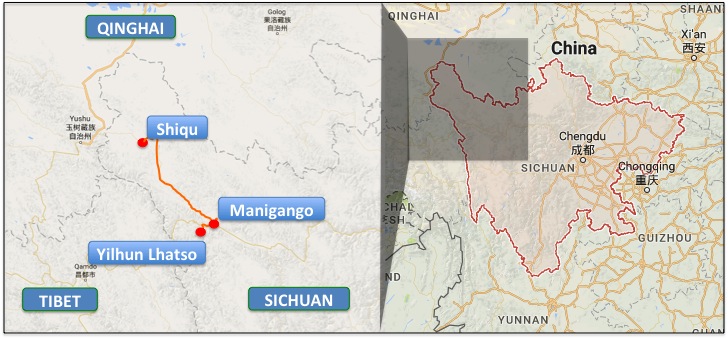
We were driving through the region on a research trip, with a small group of intrepid guests joining our Tibetan guide Dorjee, driver Mr Wu and myself.
Back in Manigango, our map showed the road ahead as a thin, green line meandering between the Bayan Har and Trola mountains, skirting nature reserves, passing monasteries and infrequent villages.
However, as we turned onto the thin, green road – the S217 – it quickly became apparent that we could only go as fast as the road surface allowed, and no faster.
The dirt road was rocky and rutted, but the scenery provided a welcome distraction as we wound up to our first mountain pass of the day, saw-toothed mountains piercing the horizon to the south.
After we had lurched and jolted far enough from Manigango to allay a little of my concern over our arrival time, the convoy stopped for lunch, lured by a row of vultures perched up above the road. While Dorjee and I assembled our picnic lunch, our guests wandered off to see what had attracted the vultures – a recently expired yak. The vultures enjoyed their own lunch al fresco as we did the same, the humans filling up on noodles, bananas and glucose biscuits, and making occasional attempts to photograph the enormous vultures as they soared, humpbacked above us.
Fortified, on we drove, passing the monastery town of Dzogchen. Despite a history beset by disaster – the monastery was flattened by an earthquake in the 1840s, burnt down in the year of the ‘Fire Mouse’ (1936), and most recently pillaged by the Red Army in 1959 – Dzogchen Monastery flourishes still. We bumped straight past, however, Dorjee clearly sad not to have the opportunity to stop and explore. Throughout the trip, he took photos at every monastery we visited, sharing them with friends across Tibet on the micro-blogging site, Weibo – pilgrimage meets Web 2.0.
After Dzogchen, the country was wild. Lone Tibetan wolves loped over far-off hillsides in search of plump marmots and plateau pikas. Nomad girls cracked wurdo – rope slings used to hurl rocks at yaks and sheep – at their herds from the roadside.
We stopped alongside one group of girls, where Dorjee demonstrated his wurdo-wielding skills, his rocks falling well short of their target, plopping harmlessly into the freezing river. A guest tried his hand as well, as we scattered lest his missile go astray. My worries about our arrival time had faded, forgotten in the excitement of seeing a beautiful place for the first time. I spent an increasing amount of time risking frostbite by taking blurry photographs out of the lead car’s sunroof.
Late in the afternoon we arrived at the start of a newly paved road, whoops of relief crackling over the walkie-talkies. Only for a minute though, as the flat road revealed an equally flat tyre on the lead car and it gently started to snow.
In an admirable instance of teamwork, everyone – guests included – left their heated seats and helped to change the tyre. Four burly Tibetan men packed into a tiny yellow car stopped and spilled out to offer their assistance, while Mr Wu and a combination of guests loosened bolts and did useful things, and I fumbled with the spare tyre.
Twenty minutes later we were moving again. The snow stayed gentle and the road surface stayed good – the road gods smiled upon us, at last. Under dramatic skies and in the dying rays of the day’s sunlight, we arrived in Shiqu. As we staggered into the hotel lobby, the guests spontaneously started applauding. Whether this was in amazement at having arrived at all, or in thanks for a wonderful journey, I’m unsure, but it completed a strange and beautiful day.
My Chinese road atlas is open beside me as I write, reminding me that we passed through this region quickly, even if the day itself felt epic. Shiqu still beckons, even four years on. One day I hope to return and visit the grave of King Gesar, ruler of the legendary Kingdom of Ling. One day I’d like to walk a sunset kora around Bagemani, an ancient, sprawling temple constructed entirely of prayer stones.
Sometimes I have felt that my spending so much time travelling in a single country is a mistake. Then there are other times – like this – when one journey inspires the next, and I realise how many fascinating, beautiful things still lie within China’s borders, waiting.
Discover the full range of journeys to Tibet and the surrounding regions on our website.


